25 years with European projects – 15 years with ITB – 8 years with regular blogging
In my recent posts I have several times mentioned that I am going through a transition from active project work to retirement. In my latest post I was pleased to note that the management of the University of Bremen thanked me for my years of service and sent me nice souvenirs from Bremen. During the last few days it has crossed my mind that several anniversaries of my career come together in this season. So, perhaps it is appropriate to say some words about the beginning of my engagement with European projects (25 years ago). Then, I can reflect on the beginning of my work as a researcher of Institut Technik & Bildung (ITB) – and as an active project promoter (15 years ago). Finally, it is worthwhile to look back at my start as a regular blogger on my work in European projects (8 years ago). To be sure, I do not try to give a complete overview of my work with projects during all these years. Instead, I want to give insights into critical turning points and changes in the European cooperation climate in the field of vocational education and training (VET).
25 years work with European projects in the field of VET
Indeed, I had started working at Cedefop (European Centre for the Development of Vocational Training) already in the year 1994. My work started on transitional basis and at that time all Cedefop activities were overshadowed by the fact that the centre was to be relocated from Berlin to Thessaloniki. However, already during my time in Berlin I had made contacts with different European institutes that were preparing projects for the new European cooperation programs – in particular for the Leonardo da Vinci program for the field of VET. Moreover, I had participated in the inaugural events that were organised in Berlin by the European Commission and the national Leonardo centre in Germany (at that time placed in Berlin). At that time the role of Cedefop vis-à-vis the program and the projects was not clear. I then saw an opportunity to start a Cedefop project that was based on knowledge sharing and exchanges between parallel projects as ‘networking the networks’. By the end of the year 1995 (when Cedefop had moved to Thessaloniki and I had got a proper EU contract) I was ready to start working with a number of EU-funded projects with similar themes and interests of knowledge.
What struck me from the very beginning, was the creative and innovative spirit of many of these projects. It can at best be characterised with slogans like ‘Learning from Europe and learning for Europe’ or ‘Working together and learning from each other’. Some of the project partners had already earlier experience from European projects in which they had only produced national reports or case studies – and that was it. Now, the projects tried to develop common understanding of the theme and to set their own understanding of VET into a European group picture. In this context the partners did not understand themselves as advocates for their national systems or policies. Instead, many projects developed frameworks that helped the participants to reflect critically on the relative strengths and weaknesses of their respective VET systems and institutions. Moreover, many projects had interesting discussions, what different countries and VET models can learn from each other. As far as I am concerned, I accompanied several projects by participating in their events and organised European seminars and symposia in which project partners shared knowledge and commented each others’ work.
At that time these European research & development projects in education and training were paving the way for emerging European policies. In the beginning the first priority for these European projects was to support EU member states to develop their education and training systems with comparative and collaborative project results. Thus, the projects were working in a creative space and the policy-makers were not steering strongly the work in these programs. However, the creative period and climate of openness did not last long and the momentum faded away. As I see it, there were several reasons for this:
- Although the projects provided valuable analyses and opened interesting innovative perspectives, they were not in the position to push forward strong change agendas. The messages on learning from each other did not lead to effective policy processes.
- Many projects had reached an interesting interim synthesis with a limited number of partner countries. When follow-up projects were launched with a wider range of participating countries, the European group picture got blurred.
- The researchers who had participated in several projects had reached a point of relative saturation of learning from each other and were confronted that this wider knowledge does not help them in promoting innovations in their own countries.
- At the European level policy-makers shifted the emphasis from innovations in national VET systems to transparency of learning outcomes. Thus, instead of looking for systemic and cultural innovations, the policy processes started working with quasi-neutral ‘European’ reference levels, descriptors and credit transfer models.
During those years (1994/95 – 2002) blogging was not available as an option to reflect on the activities. At that time I could at best write down my experiences and thoughts into my mission reports (Dienstreiseberichte). After my time in Cedefop I compiled them into several thematic logbooks that gave a picture on my accompanying activities (with projects) on my involvement in conferences and on my contributions to the VETNET network (in the context of ECER-conferences).
15 years work with European projects of ITB
Alongside the above-described change in the European cooperation climate my time at Cedefop had come to an end. I had returned to Finland and tried to get grounded in my home country. However, it pointed out to be harder than I thought. Therefore, I was pleased to start working at ITB. I had learned to know the institute already before my time in Cedefop and I had had very close cooperation with ITB colleagues promoting the ‘networking the networks’ among European projects.
In the beginning my role was somewhat ambiguous. To be sure, I had a clear task to support ITB in the European follow-up of the international Hangzhou conference to promote a common approach to VET teacher education (based on genuine VET research tradition). However, in addition to this, it was not clear, what else was on the cards. However, very soon a colleague had a traffic accident and got a hospital infection on top of it. So, I was asked to jump in as a replacement to coordinate the EU-funded project on workplace learning partnerships. This turned out to be a hard ride, because the partners were working in very different circumstances and it was difficult to bring the activities and achievements towards common conclusions.
This difficult start was followed by a number of projects on ‘training of trainers’ or promoting professional development of ‘teachers and trainers in VET’. Many of these projects were overshadowed by policy-makers’ expectations to create common European standards or guidelines (compatible with the Bachelor/Master structure of the Bologna process or in terms of common European reference levels). Some of these projects could promote learning from each other, but the diversity of the country-specific approaches could hardly be linked to a common innovation agenda. Yet, as a side-effect, some of these projects brought the work with common platforms, project-based blogs and social media into picture.
Indeed, during this period I made several attempts to use blogging as means to support European projects. Firstly I tried to work with project-specific blogs as means to provide progress reports and to share ideas. Also, at a certain point there was an effort to develop a conference blog for the VETNET network – to share experiences of different sessions. Some of the project blogs – in particular those that involved video interviews – played a role in bringing the partners together to a common discussion. Yet, they were hardly in a position to reach a wider audience. For me personally some project blogs were of vital importance in shaping the ITB contribution as series of blog articles (e.g. the Politics project) or as series of video interviews with ITB colleagues and affiliated VET teachers (e.g. the Co-op PBL in VET project). Sadly, most of these project blogs have gone lost since the respective websites are no longer available.
8 years with regular blogging on my work and experiences with my latest projects
Already during the above-mentioned phase of work I had tried to start my own blog as means to share ideas and experiences. However, these efforts were rather short-lived. My first start was an attempt to revitalize the ‘networking the networks’ approach with a self-made framework of common ideas to be promoted in European projects. Obviously, such an idea – without an institutional backing and without any resources – was a castle in the air. Then, at the next phase I already grasped the leading theme ‘working and learning’ but the projects of that time did not give much ingredients for regular blogging.
Strangely enough, the greatest opportunity for ‘working and learning’ in the context of European cooperation was provided by a project that was not designed by ITB and wasn’t focusing primarily on the field of VET. Indeed, the Learning Layers project was developed by an interdisciplinary consortium of educational technologists, ICT system architects, software developers and applied information technologists. They were interested in promoting organisational and workplace-based learning in healthcare organisations and were developing a proposal for the 7th Framework Programme of Research, Technology and development of the European Union. Luckily, the consortium came to a conclusion that they needed another sector in another country. That brought into picture the construction sector in Germany and ITB as a partner to coordinate and support the construction pilot.
In the light of the above the ITB team had to work itself in into the project and to develop a common approach with the application partners in the construction sector. Based on the experience of ITB in an earlier Work & Technology programme it was possible to launch the initial ‘co-design workshops’ that mapped some needs and possible ways forward. The common design conferences of the consortium gave a rough orientation towards a design idea – digitization of training and learning materials in the construction sector. Yet, with trials, efforts and reorientation this idea was reworked into the concept of the Learning Toolbox – a digital toolset to support workplace learning. Yet, the path from the design idea to a workable toolset and to digital competences to use it was a rocky road. Thus, we needed to take several actions in training the trainers and in finding ways to use the functionality that was emerging. All this complexity and the search and research processes provided a basis for active blogging.
In a similar way I faced a challenge in the follow-up phase when I got the task to represent ITB in the TACCLE4 CPD project. As I have explained it in my blogs of the recent years, I had to work myself and the field of VET in into a project that had focused on general education and promoting digital competences of classroom teachers. Here, I had to analyse the tradition of earlier TACCLE projects and the legacy of the Learning Layers project as a different starting points for promoting digital competences of teachers and trainers. This tension provided a basis for a further period of active blogging.
At the end of both the Learning Layers project I have compiled annual logbooks of the blog posts that I have written during the years that project worked (2012/13 – 2016/17). I also compied a thematic logbook on the development of the Learning Toolbox during the project and in the immediate follow-up phase. Finally, at the end of my work for the TACCLE4 CPD project I have compiled a logbook of my blog posts for this project. All these logbooks – as well as the earlier logbooks of mission reports are all available on my page on ResearchGate.
—
I guess this is enough of the different periods in my work with European projects. As I see it, I am now stepping out of the project activities – but I can still keep on reflecting, what have been the lessons learned. And I have also learned to write blogs on other topics of European interest. So, I will not drop the pencil now that I have gone to retirement.
More blogs to come (but from different perspective) …
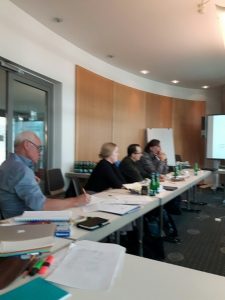
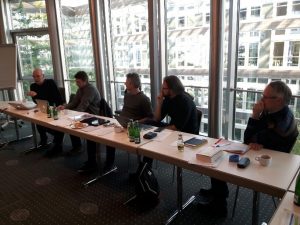
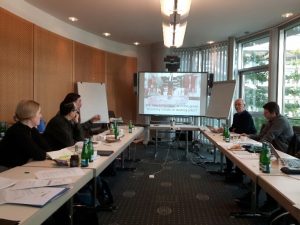
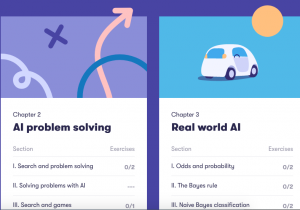
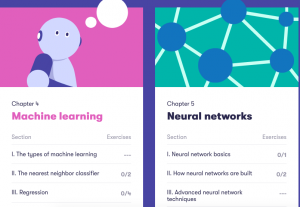
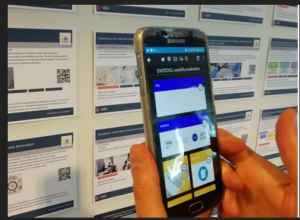
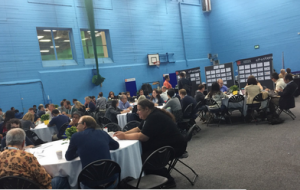
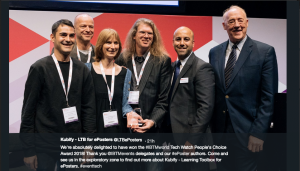
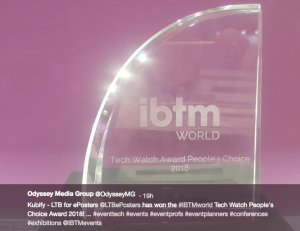
 The UK Centre for Cities has been undertaking a lot of interesting research on the future of cities. In a recent article on their website, they look at ‘why place matters when thinking about productivity. Productivity has been persistently low in the UK and the article discusses “‘Place’, one of the pillars of productivity identified by the
The UK Centre for Cities has been undertaking a lot of interesting research on the future of cities. In a recent article on their website, they look at ‘why place matters when thinking about productivity. Productivity has been persistently low in the UK and the article discusses “‘Place’, one of the pillars of productivity identified by the 